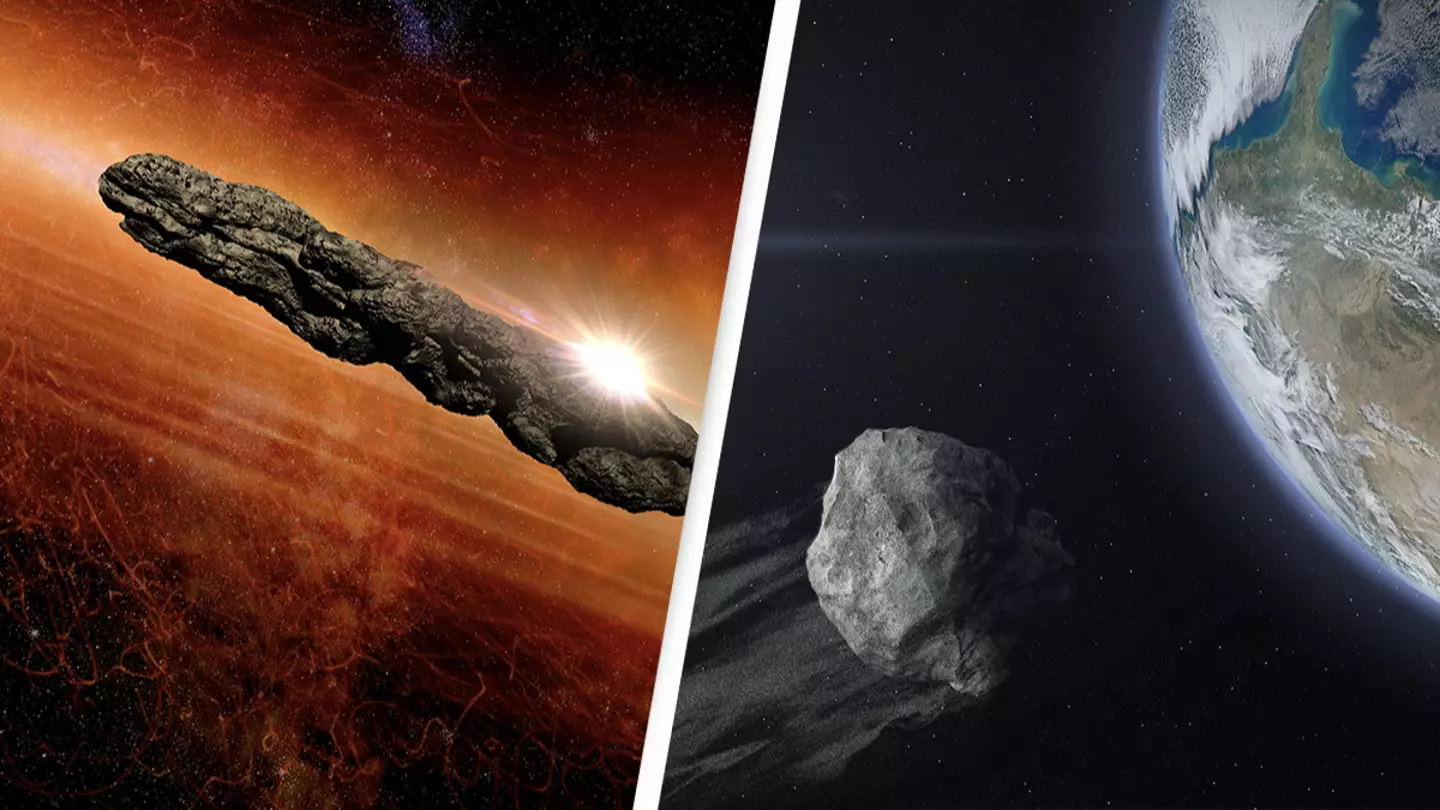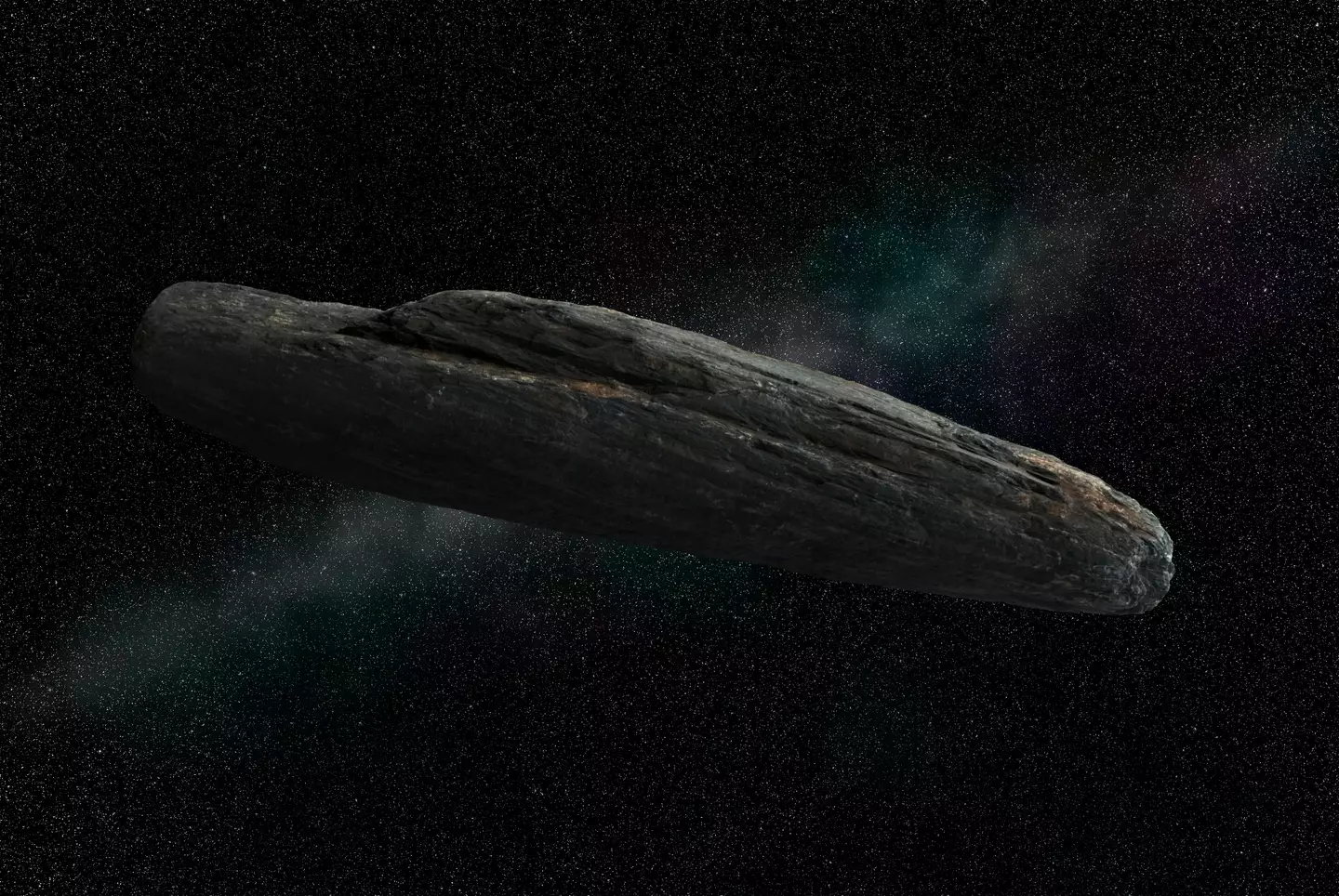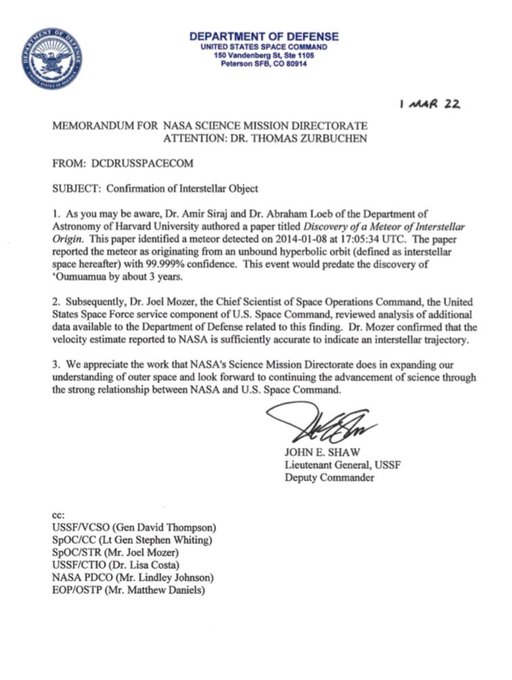
A meteor that entered Earth’s atmosphere in 2014 was from another solar system, the US Space Command has confirmed – meaning it is believed to be the first interstellar object to reach Earth.
The meteor burnt up in the sky above Papua New Guinea, and may have left interstellar debris scattered on the floor of the South Pacific Ocean, scientists believe.
The discovery was first shared in a 2019 study published by Harvard University researchers Dr Amir Siraj and Dr Abraham Loeb, but the US Space Command has now confirmed the finding in a recently-released memo, shared last week on social media.
Advert
Lieutenant General John E. Shaw, USSF Deputy Commander, said: “I had the pleasure of signing a memo with @ussfspoc’s Chief Scientist, Dr. Mozer, to confirm that a previously-detected interstellar object was indeed an interstellar object, a confirmation that assisted the broader astronomical community.”
The memo, dated 1 March 2022, outlined the findings described by Siraj and Loeb in their 2019 paper.
It said: “As you may be aware, Dr. Amir Siraj and Dr. Abraham Loeb of the Department of Astronomy of Harvard University authored a paper titled Discovery of a Meteor of Interstellar Origin. This paper identified a meteor detected on 2014-01-08 at 17:05:34 UTC. The paper reported the meteor as originating from an unbound hyperbolic orbit (defined as interstellar space hereafter) with 99.999% confidence. This event would predate the discovery of ‘Oumuamua by about 3 years.
Advert
“Subsequently, Dr. Joel Mozer, the Chief Scientist of Space Operations Command, the United States Space Force service component of U.S. Command, reviewed analysis of additional data available to the Department of Defense relating to this finding. Dr. Mozer confirmed that the velocity estimate reported to NASA is sufficiently accurate to indicate an interstellar trajectory.”
Siraj and Loeb had started looking through historical data from NASA’s Center for Near Earth Object Studies in the wake of the discovery of 'Oumuamua, the large cigar-shaped interstellar object that passed through our solar system in 2017. They scoured the data for evidence of small meteors that may also have entered Earth’s atmosphere from outside our own solar system – in turn finding one that generated a fireball above Papua New Guinea on 8 January 2014.

Speaking to Vice, Siraj said he was hopeful about a potential search for pieces of meteorite that could be lying on the ocean floor in the South Pacific.
Advert
He said: “It would be a big undertaking, but we’re going to look at it in extreme depth because the possibility of getting the first piece of interstellar material is exciting enough to check this very thoroughly and talk to all the world experts on ocean expeditions to recover meteorites."
If you have a story you want to tell, send it to UNILAD via [email protected]
Topics: Space, Science, Technology, US News

